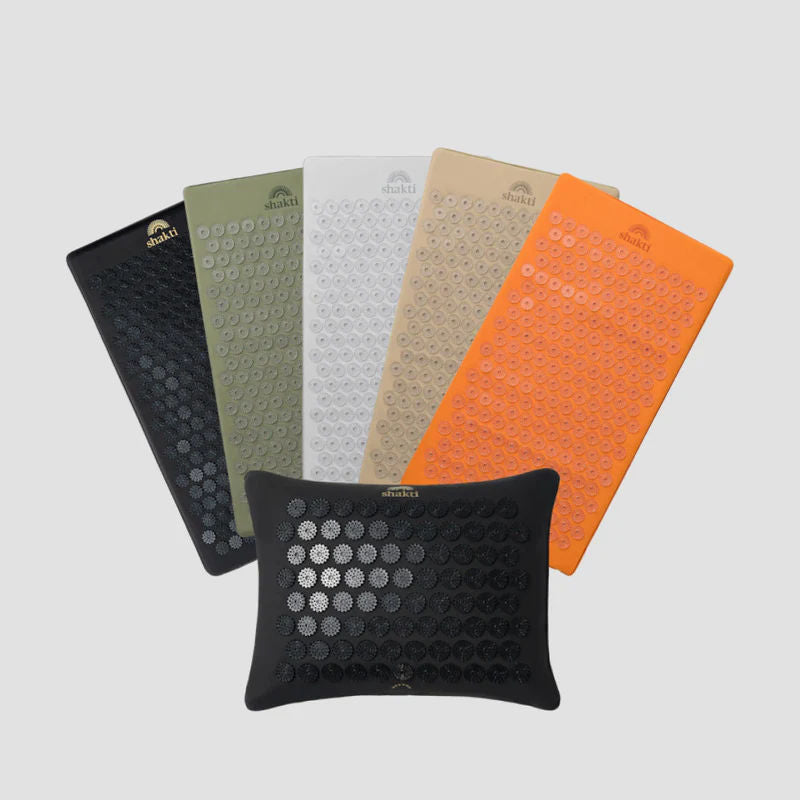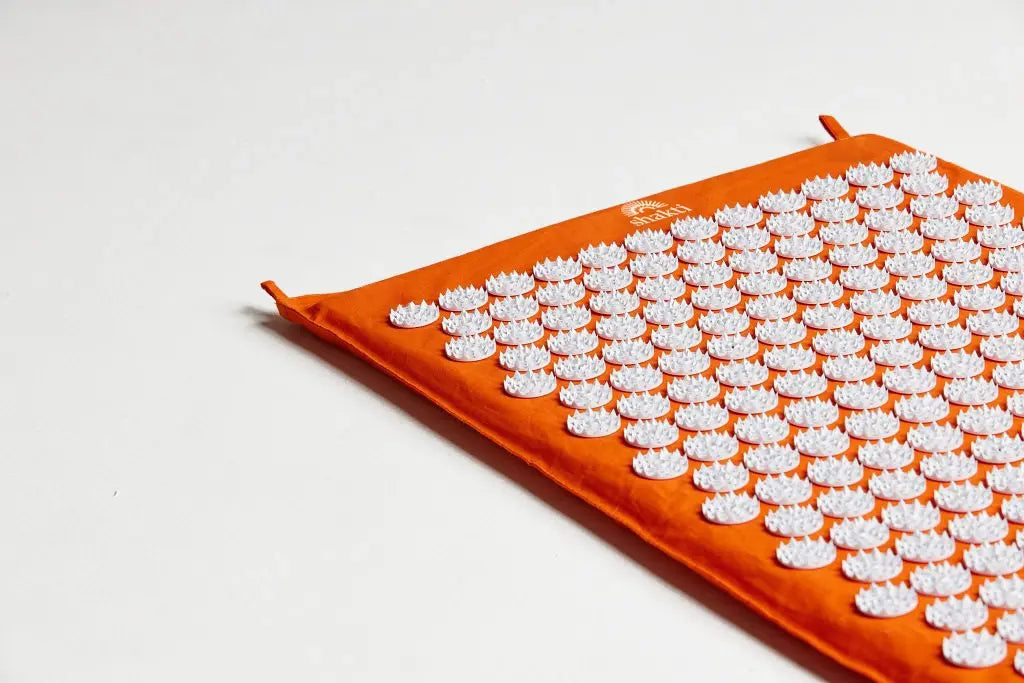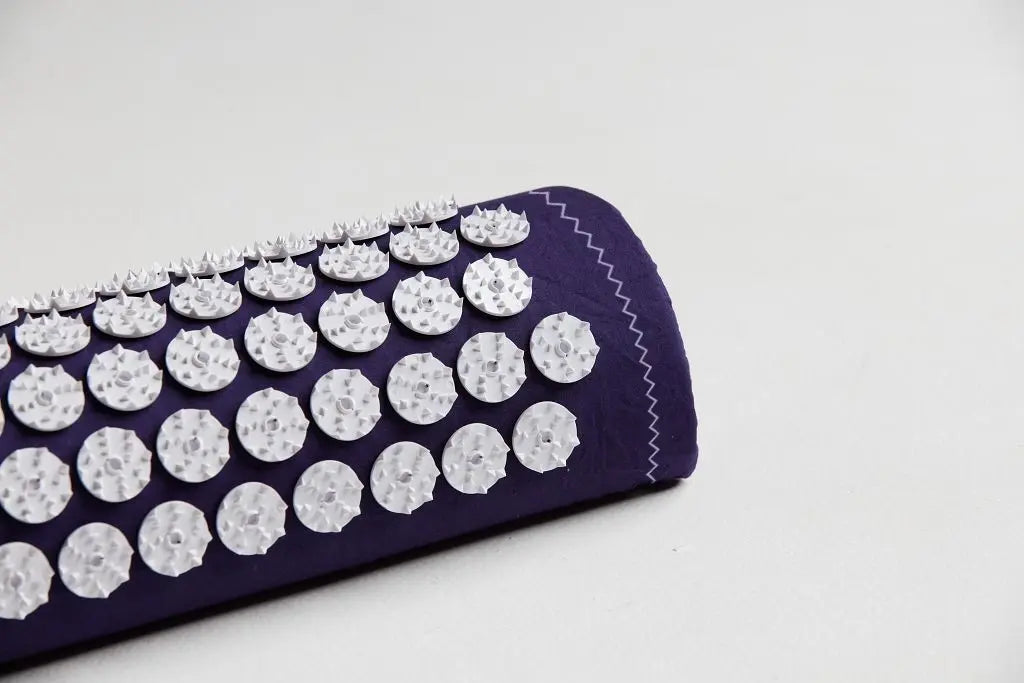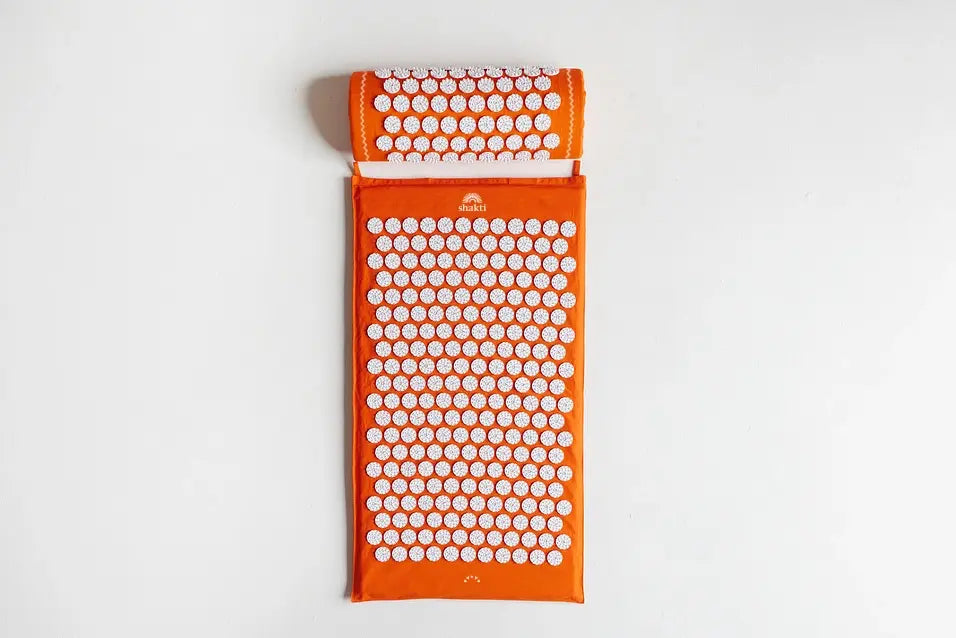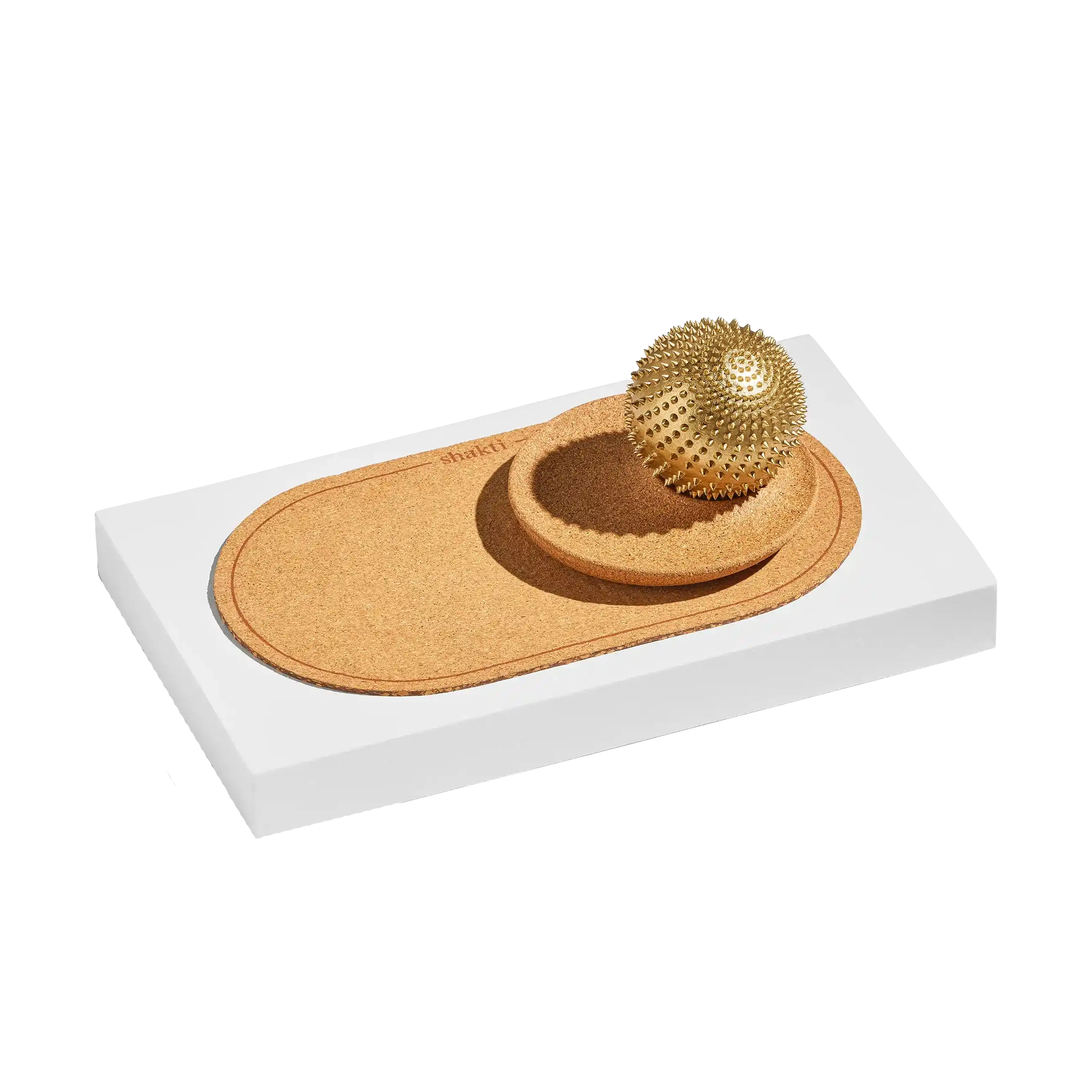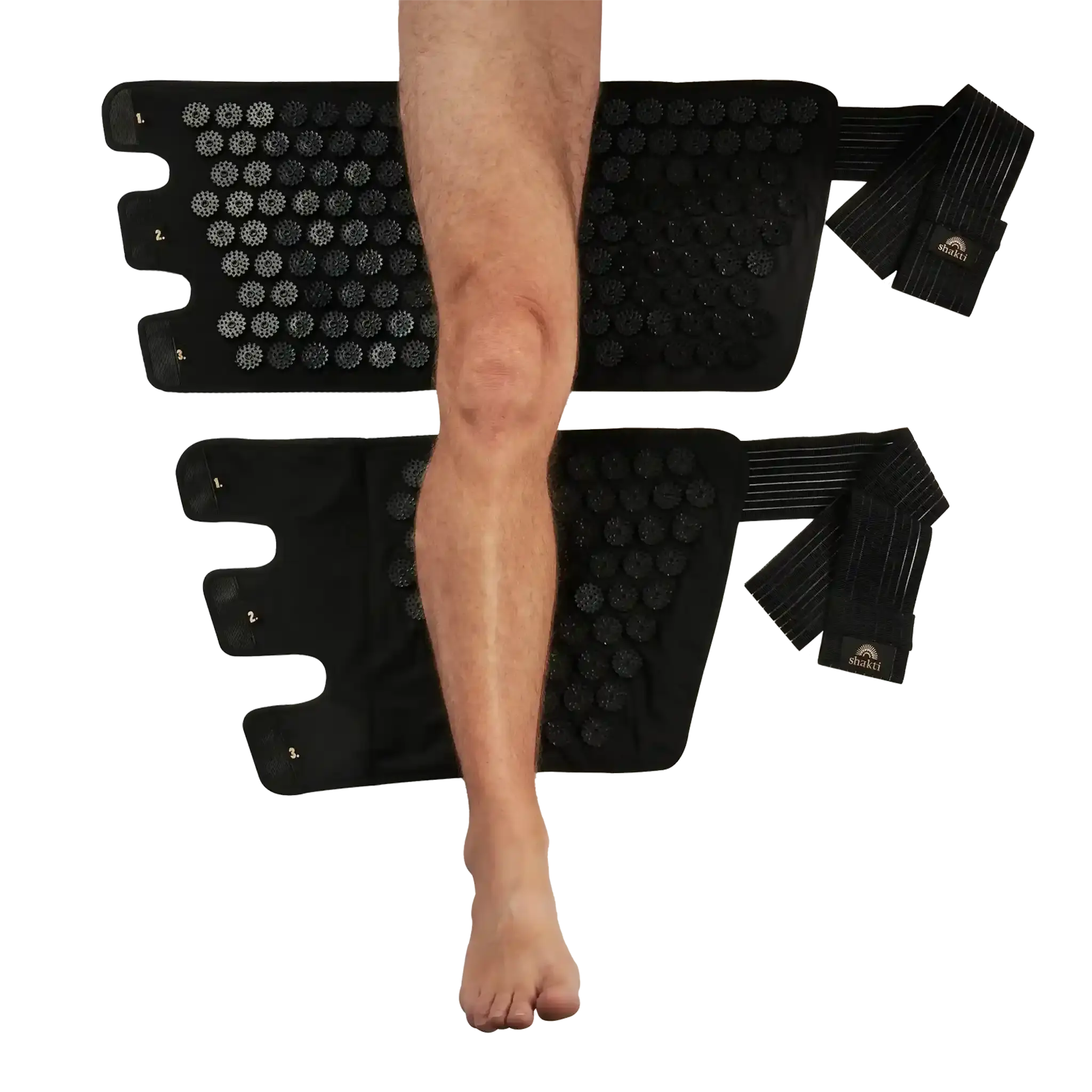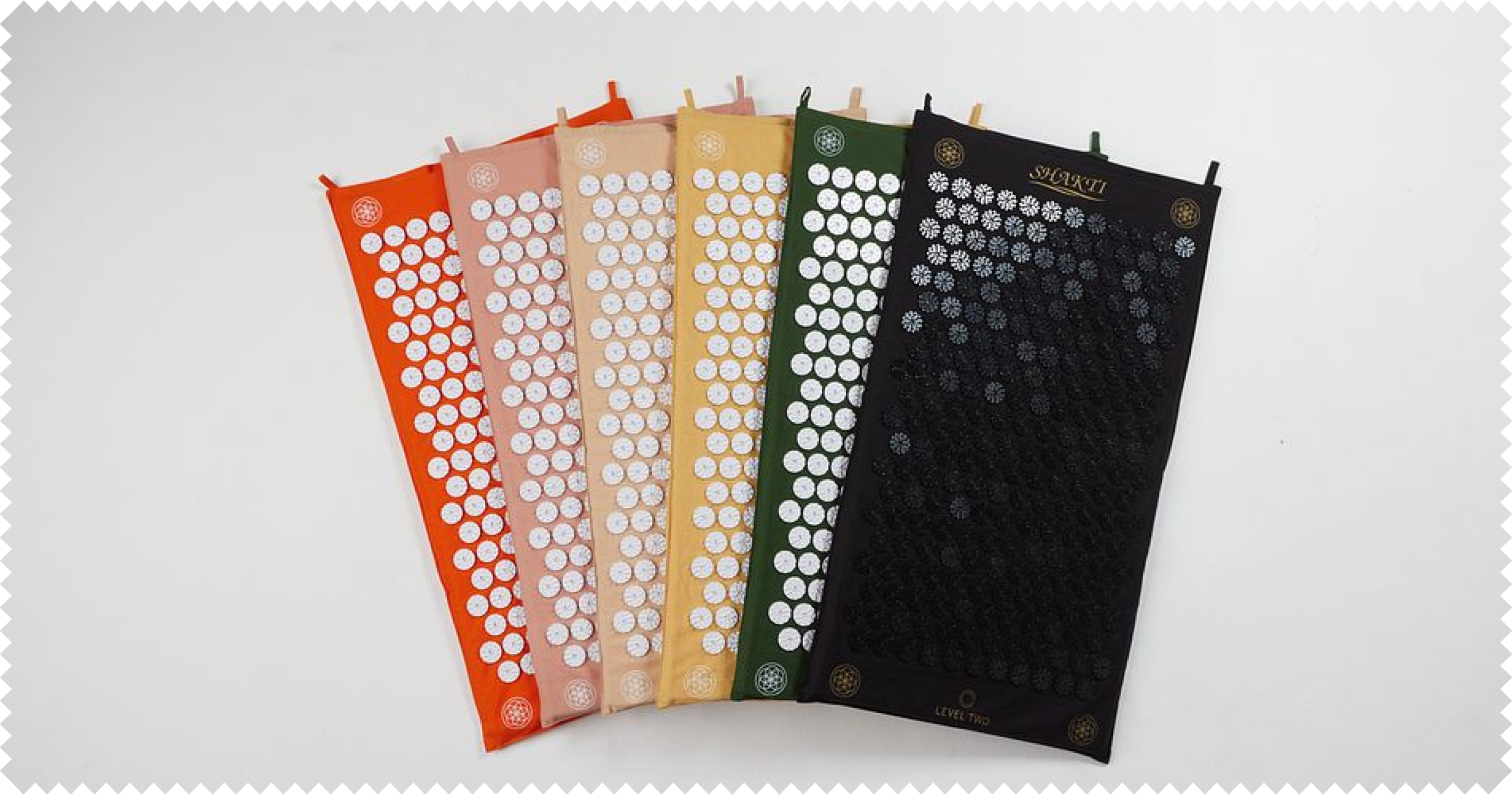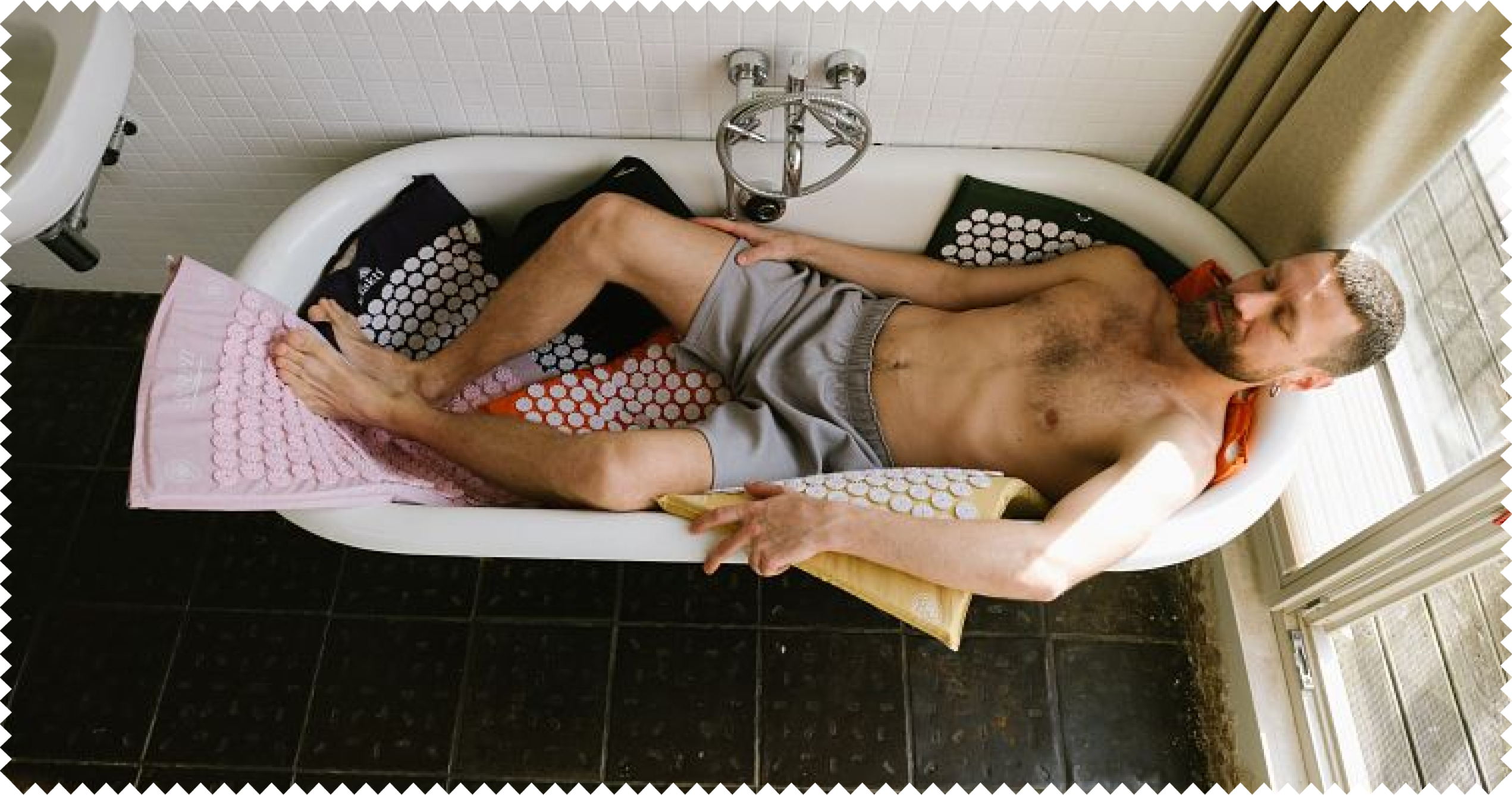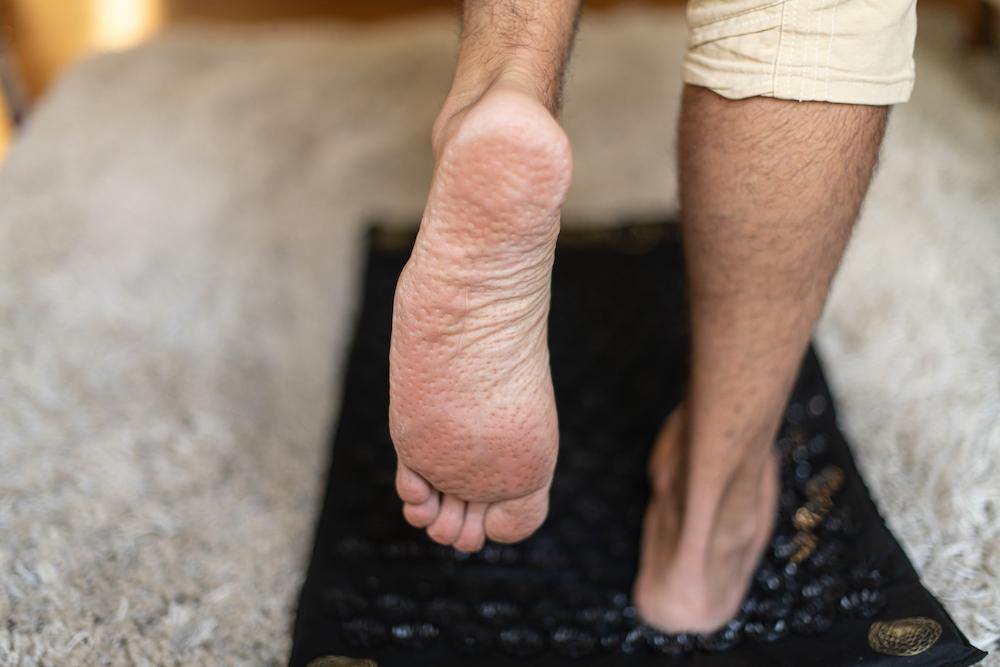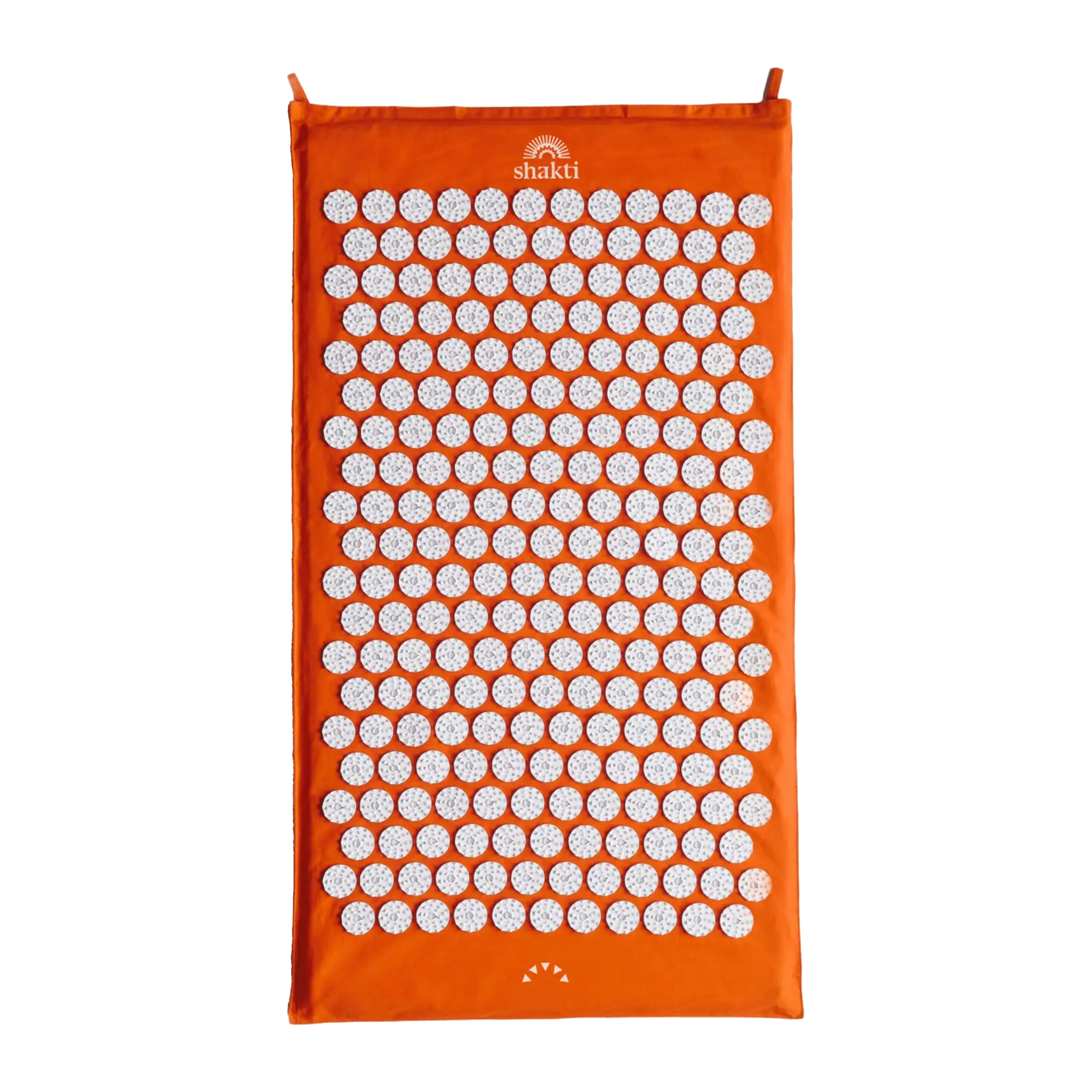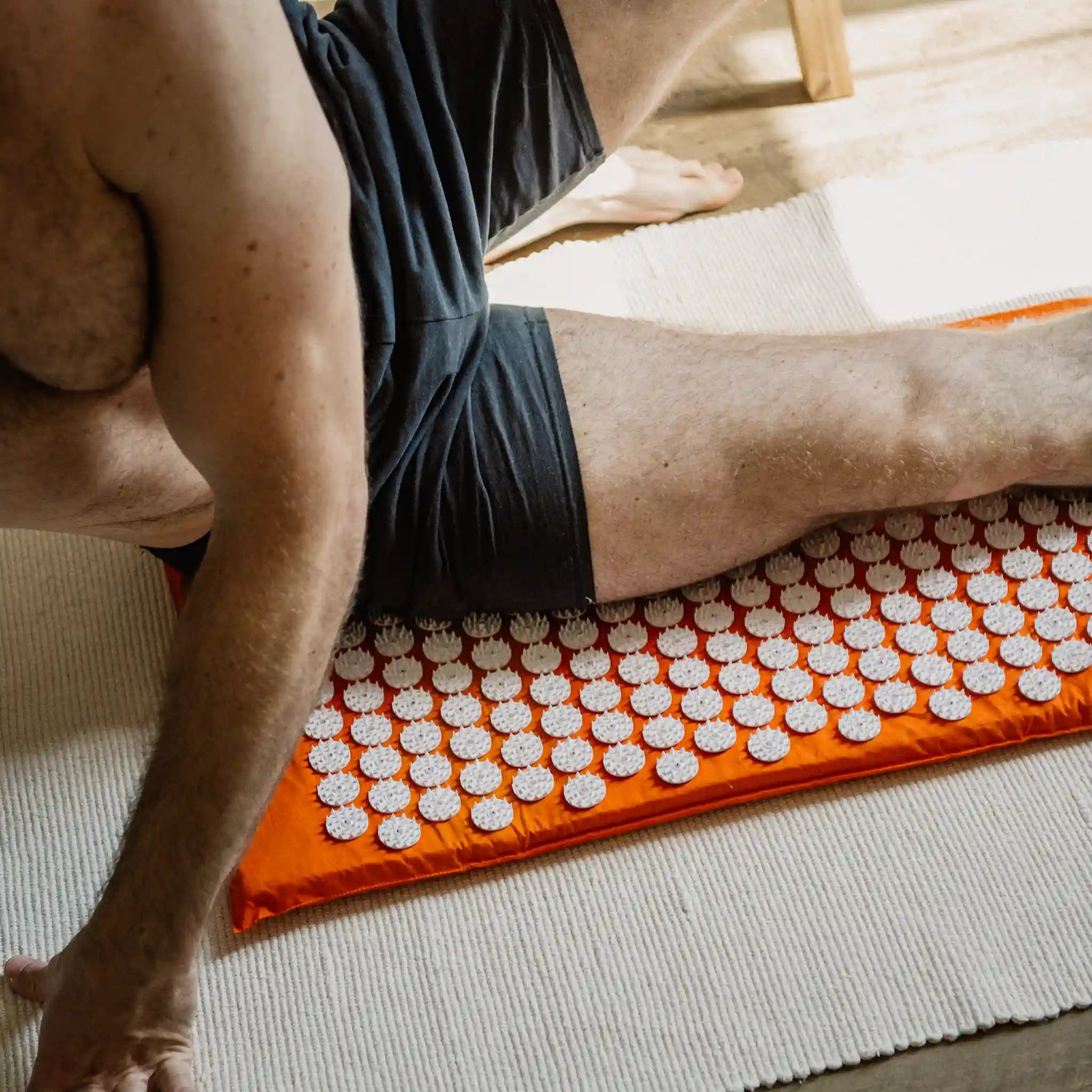- Foot pain, heel spur & Co. - treatment is important
- Pain subsides - the causes of plantar fasciitis and heel spurs
- What is plantar fasciitis?
- Plantar fasciitis & heel spur - acupressure & home remedies
- Plantar fasciitis & heel spurs: A final word for nimble feet
Home remedies and acupressure for plantar fasciitis - Say no to foot pain!
Plantar fasciitis or heel spur - this not only sounds strange, but is also a very painful affair. Many people are affected by this fascia problem at least once in their life - but don't really know where it comes from.
To shed some light on this painful issue, today we explain how the problem arises, how acupressure can help with plantar fasciitis and heel spurs, and which home remedies are really effective.
Foot pain, heel spur & Co. - treatment is important
The alarm clock rings in the morning. You stretch once and get up. Quickly wake up in the shower, then have a hot drink and head off to work. In the afternoon, you're ready for a good workout - and you meet your friends in the park. Maybe in the evening you'll go out for a delicious meal or to the club for a little dancing.
Sounds good, doesn't it? You probably take all these things for granted. It's just as natural that we use our feet from the time we get up in the morning until we go to bed. They carry us through the day. Often we pay far too little attention to them for this feat. Especially when it comes to plantar fasciitis, many really appreciate healthy feet. We explain here what treatment for plantar fasciitis you can do yourself and what can help against the foot pain outside. However, always remember to consult your trusted doctor if you suspect a heel spur. He can rule out other causes and give you medical advice. Our exercises do not replace any therapy, but they can complement the classic treatment and support you in your everyday life. You should never underestimate foot pain, because your feet carry you through your whole life. With our exercises you can do something good for your foot muscles.
Pain subsides - the causes of plantar fasciitis and heel spurs
Sufferers feel plantar fasciitis as a stabbing pain, which many experience as so severe that they cannot put weight on the heel. The cause of this pain is the overloaded plantar fascia. But what is this fascia and what causes the pain?
You can think of it something like this: Running along the bottom of your foot is a tissue that is essential for smooth foot movement. This tissue, the plantar fascia, runs from your heel to the middle of your foot and supports the arch of your foot from below. Like a securing pillar that at the same time must be flexible to follow the movements of the foot without damage.
What is plantar fasciitis?
So far, so good - but how does this fascia actually work, how is it overloaded and how does a heel spur occur? The whole thing works as follows:
When a person steps on, their heel shifts slightly outward due to the pressure - this causes the bones in the foot to experience pressure relief and, supported by the tissue around them, to shift slightly against each other. We are built this way so that we can adapt to uneven ground when we step on it. If the treading motion now continues, the foot that grips the ground in front becomes firm so that we can push off and the heel moves slightly inward. During this movement, the important push-off effect that we know from jogging is created.
If this healthy foot process is disturbed, for example because a tense calf blocks the movement of the foot, this results in significantly too much load pressure on the plantar fascia. The fascia begins to ache, is repeatedly misloaded and plantar fasciitis takes its course. So the goal should be to not only look at the fascia when treating the problem, but to solve the root causes, which are mostly tension.
Treatment of plantar fasciitis: what to do for heel spur?
According to the German Medical Journal, so-called conservative therapy measures, which include stretching exercises and fascia training, lead most patients back to a pain-free gait. Through targeted regular exercise, you can intensively support your body in getting fit again more quickly. But which exercises are helpful for heel spurs? At this point, we have of course prepared specific exercises for you to do.
Plantar fasciitis & heel spur - acupressure & home remedies
Of course, if you have severe foot pain, seeing a doctor or physiotherapist is the way to go - but there are also a number of things you can do at home to actively relieve the plantar fascia and counteract heel spurs with home remedies. The following exercises are easy to do and take up very little space:
Heel spur exercises: Oblique calf stretching with the acupressure mat ShaktiMat
In order to relieve the plantar fascia, it is important to restore the smooth movement described above. The easiest way to do this is directly against the wall. Place the ShaktiMat acupressure mat about a large step away from the wall and place the back of your foot on the mat. Now support yourself on the wall with both hands and move the loose leg (which is not on the ShaktiMat) diagonally in front of the other leg towards the wall so that the loose leg crosses over the supporting leg. Then bring the leg back. Repeat this movement slowly and at different angles to the wall - you should feel a pull in the calf of the supporting leg.
The aim of the exercise is to loosen the tissue of the calf to such an extent that the natural movement of the heel, as described above, takes place again on its own. To achieve the desired goal, you must of course not give up after one exercise session. Repeat the stretching exercise at least once a day for about two minutes and you will notice a big difference in mobility after just one week. You can of course do this exercise just as well with our acupressure foot mat as well.
Butt training on the acupressure mat against plantar fasciitis
Another common cause of plantar fasciitis or heel spurs is weak or severely tense pomus muscles. But wait, how can that be? If the muscles of the buttocks are unevenly developed, this causes many people to lean their weight mainly on one leg when standing or holding something heavy (such as a child). The problem with this? The foot of the more heavily loaded leg carries the load, while the foot of the less loaded leg relaxes too much. If you take a step from this position or even start walking, the following happens:
The heel of the overly relaxed foot is not in the correct position to perform the step cleanly - the foot tips too far inward and the fascia must compensate for this overload. An ideal recipe for pain.
To get rid of this problem, it is necessary to release the tension of the buttock muscles and strengthen them evenly.
Step one of the exercise is to lie with your butt on the ShaktiMat for a few minutes. First on your back - then on your side. If you find this exercise very painful at first because of your tension, you can put a thin towel underneath or put on thick sports pants to relieve the pressure of the tips.
Step two is to support yourself lightly against the wall, lift the leg closer to the wall and alternately lift and release it. The muscle you feel is in the standing leg at the side of the buttocks. Repeat the exercise about 15-20 times slowly and with concentration, then switch sides.
Exercises against heel spur: rotation and standing upright
The third cause of plantar fascia pain and plantar fasciitis is an incomplete ability of the lower back to move smoothly, most often triggered by poor posture.
If you stand up straight and rotate your upper body to the right, your left foot will tilt inward to compensate for the movement. The problem that occurs now is in the back rotation. If you have poor posture and your shoulders drop forward, the curvature of your spine restricts a gliding rotation back and your foot will remain tipped inward. Again, if you take a step from this position now, the fascia is put under way too much stress.
To achieve good lower back mobility, it's important to not only directly reduce tension in your lower back, but also improve your posture by releasing tension between your shoulder blades and in your neck. This gives your spine the opportunity to straighten up again and you regain your full range of motion.
You can find suitable exercises with the acupressure mat and acupressure points for the spine and neck in these articles from us.
Acupressure points for plantar fasciitis
Besides the moving exercises, there are two acupressure points in particular for plantar fasciitis. The first point is located in the middle of the calf and the second in the middle of the plantar fascia itself, just behind the end of the heel, under the sole of the foot.
If it is not too tiring for you, you should press both points forcefully at the same time, taking deep breaths.
If simultaneous pressure is too strenuous for you, a good solution is to first press the calf for about a minute, rest briefly and then tackle the point under the foot. Since both points are quite deep in the tissues, you may have to be very forceful with your hands to reach the points. Once you reach them, they will usually become noticeable by being slightly to severely painful.
Plantar fasciitis home remedies - these remedies help with pain
For acute pain, it's important to first deal with the pain sensation and alleviate it before you move on to tackling the cause with a clear head. There are a few simple tips for this:
Put your foot up as often as you can to reduce pressure on the tissue. If you are in a lot of pain or have been walking a lot, it is worth wrapping a cold pack in a towel and cooling it for fifteen minutes.
If you can't avoid walking with your aching foot because you have to go to work, for example, make sure to wear shoes with a flexible and very soft sole. Wool insoles or shock-absorbing gel insoles will turn hard shoes into a more comfortable and gentle alternative in no time.
In addition, massage with a fascia roller can be beneficial for plantar fasciitis.
We probably don't need to tell you, but high heels are not a good idea for your feet as long as your plantar fascia is overloaded. The same goes for walking barefoot on hard surfaces and wearing flip-flops. Both contribute to increasing the strain and you should never do this if you have plantar fasciitis. Initially, you should also avoid walking during heel spur treatment. One rule is: anything that causes discomfort the following day should be restricted.
Once the home remedies have given you some relief, you can turn to the above exercises to show the plantar fasciitis with acupressure, stretching exercises and co. that you finally want to run pain-free again.
Plantar fasciitis & heel spurs: A final word for nimble feet
Running continues to enjoy great popularity. No wonder, because it really is a great sport to clear the head and get the body going. But runners in particular are often affected by plantar fasciitis. So if you like to run a lot, we advise you to prevent plantar fasciitis with the exercises we've compiled above and to load your body in a healthy way during sports from the very beginning.
We wish you pain-free steps and a lot of fun going your way - without plantar fasciitis. For a full diagnosis and plantar fasciitis treatment, we still recommend consulting a doctor. He can help with heel spur treatment and give a medically reliable assessment.
If you would like to discuss the topics of acupressure and acupressure mats for plantar fasciitis and give other sufferers tips or ask questions, please leave us a comment or visit us on Facebook.
Sources for this article
- Andrews, Synthia and Dempsey, Bobbi: Acupressure & Reflexology for Dummies. Wiley Publishing, Indianapolis 2007. p. 159 ff.
- Medical Journal: https://www.aerzteblatt.de/archiv/205148/Plantarer-Fussschmerz
- Dr. Stein, Aaron: Acupressure Guide. Alleviate Headaches, Neck and Joint Pain, Anxiety Attacks and Other Ailments. Mobile Reference, 2nd edition, Canada 2009. p. 56
- NHS UK, https://www.nhs.uk/conditions/plantar-fasciitis/
- Schwind, Peter: Fascia. Tissue of life. 2nd edition, Irisiana, Munich 2015 p. 55 ff.


